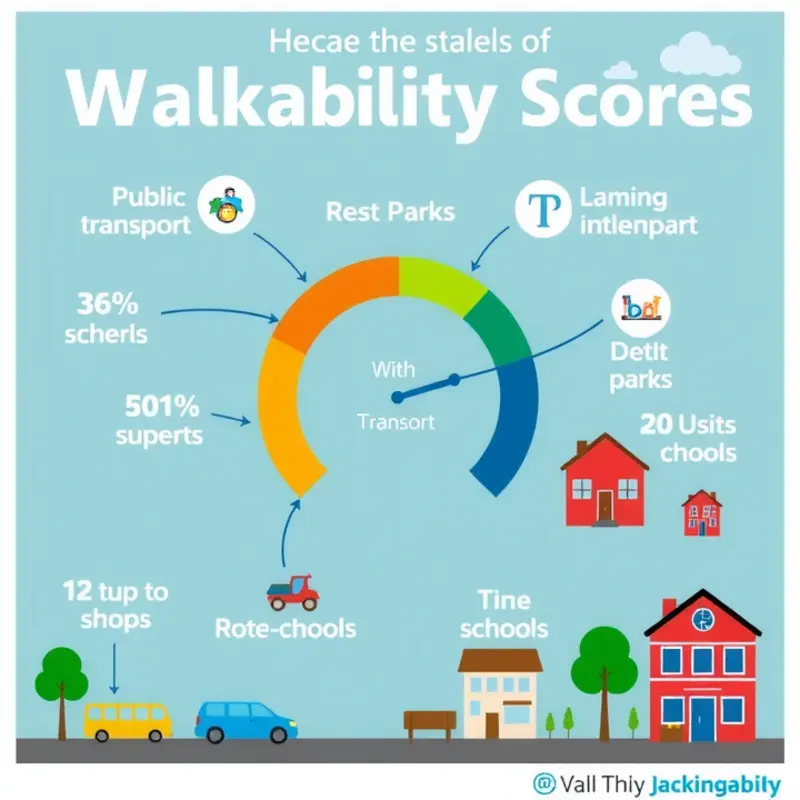Renting your first apartment can feel like navigating a minefield of choices: neighborhoods, amenities, and dare we say it—walkability? Yes, walkability is a game-changer and factor that can make or break your rental experience. Whether you’re a young professional craving a bustling urban vibe or a couple looking for family-friendly amenities, your feet can lead the way. Are you wondering why shoes are suddenly more important than you thought? Well, think of walkability scores as a quick cheat sheet to understanding just how pedestrian-friendly your potential new neighborhood is. So, lace up your sneakers and prepare to learn how a simple score could help you live life to the fullest without the hassle of relying on four wheels (or a monthly bus pass). Let’s break down the ins and outs of walkability so you can choose your next rental with confidence—and maybe even a little humor along the way.
Understanding Walkability Scores: What Are They?

At the heart of urban living, walkability scores have emerged as a crucial metric for evaluating a neighborhood’s accessibility. This score is a reflection of how easily one can navigate an area on foot to reach essential amenities. Whether you’re considering a new rental or simply curious about your current locale, understanding walkability scores can significantly impact your lifestyle choices.
What Is a Walkability Score?
A walkability score is a numerical ranking, usually from 0 to 100, assigned to urban areas. The closer the score is to 100, the more accessible an area is considered for walking. High scores indicate that daily errands can be accomplished without the need for a vehicle, offering residents the ease of strolling to work, shops, or even recreational spots.
Factors Influencing Walkability
Several factors contribute to the calculation of a walkability score. Key considerations include the proximity of essential services like grocery stores, health care facilities, and schools. Entertainment options such as restaurants, bars, and theaters also play a significant role. Additionally, public transport availability, pedestrian-friendly infrastructure, and safety influence how a score is determined.
Streets with wide sidewalks, crosswalks, and minimal traffic hazards are favored. Parks and public spaces add value to a neighborhood’s walkability. Conversely, areas lacking pedestrian pathways or featuring high-speed traffic tend to have lower scores.
Impact on Daily Life
A high walkability score offers more than convenience; it can drastically enhance quality of life. People living in walkable areas often enjoy better health due to increased physical activity. Financial savings are another bonus—residents can reduce car-related expenses, like insurance and gas, or even forego a vehicle altogether. Social benefits are ubiquitous as frequent walks in the neighborhood can lead to stronger community bonds.
On the other hand, a low walkability score could imply dependence on cars for basic tasks. This may increase living costs and limit social interactions due to the mechanical nature of commuting.
For potential renters, analyzing walkability scores can be particularly insightful. Beyond the basics, it’s about envisioning a lifestyle where coffee shops, parks, and local haunts are part of daily routines. Often these elements make neighborhoods not just livable but lovable.
Knowing your neighborhood’s walkability can also be a deciding factor when contemplating broader lifestyle parings, such as leasing a place in a bustling college town where most necessities may be just a brief stroll away. Explore insights on choosing rental locations in college towns.
Embracing the concept of walkability opens doors to a sustainable, healthy, and socially connected lifestyle. The next time you think about moving, let the walkability score guide you to neighborhoods that could redefine your sense of community and convenience.
Finding Your Feet: How to Use Walkability Scores in Your Rental Search

Incorporating walkability scores into your rental search strategy can transform your housing hunt from frustrating to fulfilling. The first step is knowing where to access these scores. There are multiple online platforms that provide comprehensive walkability assessments for neighborhoods across the country. These tools usually rate the walkability of an area based on proximity to amenities, public transport options, and pedestrian friendliness.
After securing some data, the next key is interpretation. Higher scores typically indicate better walkability, suggesting that amenities such as grocery stores, cafes, and parks are within walking distance. However, it’s crucial to align these scores with your lifestyle preferences. For example, a neighborhood with a great walkability score might be ideal for someone who enjoys walking to work but may not be as appealing to someone who requires specific amenities, like a yoga studio or a dog park.
When applying these insights, remember that a high walkability score doesn’t automatically mean affordability. Balancing ideal neighborhoods with your budgetary constraints is vital. Conduct thorough research on rental prices in areas with high walkability scores and compare them against your budget. Sometimes, areas on the cusp of high-scoring neighborhoods might offer the balance of cost and convenience you need. Exploring alternate commuting options, such as cycling, can also extend your range of affordable options without sacrificing accessibility.
As you narrow down potential rentals, prepare to ask pertinent questions to your prospective landlords. Inquire about the distance to the nearest grocery store or the time it takes to walk to the nearest gym. Understanding the practical aspects of daily activities will lend clarity to each option. A neighborhood may boast a high walkability score, but if it lacks the specific amenities you crave, it may not suit your particular needs.
Lastly, consider how embracing a more walk-friendly lifestyle might enrich your living experience. Not only is walking beneficial for your health, but it’s also an excellent way to discover local gems you might have otherwise missed. Smaller shops, local eateries, and vibrant street markets become part of your routine, integrating you into the community fabric elegantly. For those interested in how walkability might intersect with urban exploration, our apartment-hunting guide in Amarillo offers practical insights.
Ultimately, employing walkability scores as part of your search toolkit can simplify your rental decision-making process. By focusing on accessible neighborhoods with a lifestyle allure, you’re more likely to find a place that feels genuinely like home. Allocate time to explore potential neighborhoods on foot, too. Nothing replaces the tangible experience of a simple stroll in evaluating the true walkability of an area.
Final words
In a world where time is precious and convenience is key, understanding walkability scores is your guide to navigating the rental market with slight humor and confidence. They offer insights into neighborhoods that can foster community, reduce your reliance on cars, and maximize your enjoyment of local attractions. So whether you’re rolling solo, moving in with a partner, or building a family, consider those precious steps your secret weapon for finding a home. Remember, it’s a small world after all, and you want to walk it—preferably with a fantastic cup of coffee in hand.









